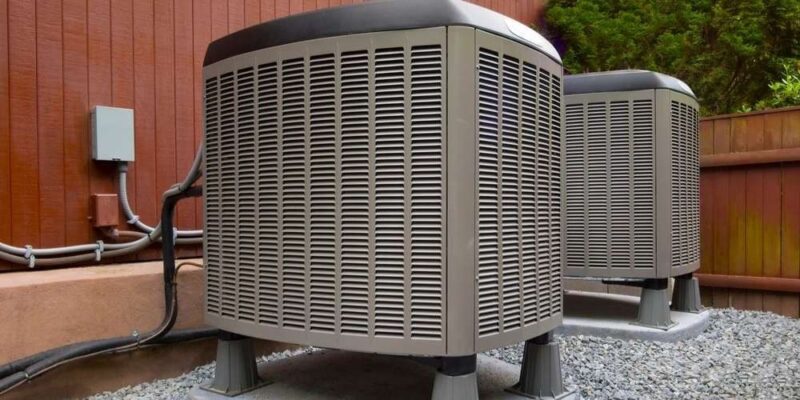Remodeling your house provides an excellent opportunity to upgrade your HVAC system. Your HVAC handles heating, cooling, ventilation, and comfort in your home. Making informed decisions when remodeling can lead to improved efficiency. This in turn is sure to lead to lower utility bills.
HVAC also allows you to have a better quality of life that’s not dictated by weather or humidity. So, while there are plenty of reasons for you to start remodeling your house. If you don’t know where to start, here are the top 10 HVAC considerations to keep in mind.
1. Importance of Ductwork Design and Type

Proper ductwork design directly impacts the efficiency of your HVAC system. To elaborate, poorly sealed or insulated ductscontribute to higher energy bills. This emphasizes the importance of optimal duct working. With this, Insulated ducts are more efficient than long runs of flexible ducts prone to kinks and air leaks.
Investing in properly sized and balanced ductwork ensures even distribution of conditioned air leading to comfort for everyone at home.
This will allow you to regulate the temperature inside your home in all weathers. It’ll also help you save money on maintenance work on unsealed ducts.
2. Shift in Refrigerant Usage and Environmental Impact
The refrigerant in HVAC systems has shifted due to environmental concerns. The R-22 refrigerant was phased out in 2015 due to its ozone depletion potential. Modern systems now use the more eco-friendly R-410A refrigerant.
When remodeling your HVAC, ensure your contractor uses non-ozone-depleting refrigerants. We’re highlighting this here: These refrigerants cut global warming. Remember that comfort is important, but not at the cost of your environment.
3. Energy Efficiency of Central Air Conditioning Systems
Central air conditioners account for a bulk of energy consumption. ENERGY STAR-certified central AC systems utilize 8% less energy than basic models. Opting for Energy Star certified high-SEER rated air conditioners provides utility bill savings.
These air conditioners also reduce environmental impact. Efficient performance is also maintained by timely maintenance.
4. ASHRAE Standards on Ventilation for Indoor Air Quality

Proper ventilation is critical for indoor air quality in homes. ASHRAE Standard 62.1 provides guidelines to determine adequate ventilation rates. ASHRAE also has guidelines for procedures based on occupancy and square footage.
Upgrades like HRVs can improve air exchange while limiting energy loss. Discuss ASHRAE 62.1 recommendations with your HVAC contractor when remodeling. Sure, you can always complete the remodeling yourself if you know the ins and outs of your HVAC. However, getting an expert opinion will help you save on time and maintenance costs in the future.
5. HVAC Considerations for Different Geographical Regions
HVAC needs vary across the U.S. based on climate. New efficiency standards are in place for air conditioners and heat pumps. However, these standards differ across geographical regions. If you live in hotter southern regions, upgrading to the new 14 SEER rating can help. Besides this, it can also have a significant impact on your energy bills.
So, if you’re moving, make sure you check the recommendations for your HVAC system based on your location. Different cities have different HVAC equipment companies that cater to their needs. If you’re in a hot city like Dallas, you’ll need to consult with HVAC Installation in Dallas services to get the ideal system for that specific location.
In the journey of remodeling, the intrinsic value of maintaining an efficient HVAC system becomes paramount, not merely for optimal temperature control but also in ensuring a healthy air quality throughout your revamped space. This encompasses not just the overt aspects of HVAC systems but delves into the intricate details of elements like chimney maintenance, a vital component often overlooked. Ensuring that your chimney is immaculately cleaned and functioning efficiently is crucial to prevent the backflow of dangerous gases into your living spaces, among other potential issues. Don’t merely take our word for it – take a moment to explore
Remodeling your house involves various critical considerations to ensure that the result aligns perfectly with your vision. An essential aspect not to overlook is the HVAC system, which plays a significant role in maintaining a comfortable living environment. Collaborating with a reliable heating contractor like MasterCraft Mechanical ensures that the HVAC elements of your remodeling project are handled with expertise and precision. Their professional insight could make a crucial difference in achieving an efficient and robust HVAC system in your remodeled home.
6. Whole-House Systems Approach to HVAC
Before you remodel, consider how all your home components interact with each other. See how changes like added insulation, and lighting upgrades impact HVAC load.
Likewise, remember that duct improvements and high-efficiency HVAC equipment matter too. You’ll need to figure out how the working of these fit into your remodeling plans.
7. Benefits of ENERGY STAR Certified Heat Pumps

Heat pumps provide both heating and cooling in one integrated system. ENERGY STAR-certified air source heat pumps are more efficient than the electrical energy they use. Their ability to move heat makes them a cost-effective upgrade over most HVAC systems.
8. Advantages of ENERGY STAR Certified Furnaces
ENERGY STAR-certified furnaces are over 15% more efficient than baseline models. Upgrading an old furnace to an ENERGY STAR-certified model can save up to $80 annually in energy costs. Energy-efficient furnaces also have sealed combustions. This allows them to reduce leaks and improve indoor air quality.
Also, experts often recommend you get your HVAC systems replaced every ten years or so. But, with ENERGY STAR-certified furnaces, you won’t have to replace them as often. It may also be a good idea to replace HVAC systems that are over with these furnaces. This little trick can help you save a lot of time and money in the long run.
9. Strategic Placement of Indoor Units
Carefully consider where to place new indoor units during remodeling. Attic furnaces are prone to leaks and can damage your ceiling over time.
Ground floor utility closets are preferable for furnace installation. For air handlers, focus on central and interior spaces for optimal performance.
Besides, ground floor units will also be a lot easier for you to clean and maintain in the long run. Since you’ll be using your HVAC system for a decade or more, this is an important consideration.
10. Accessibility of Air Filters

Ensure air filters are easily accessible to homeowners during and after remodeling. Filters need regular replacement, so an accessible location saves hassle. Place filters so they can be changed without moving furniture or needing a ladder. Proper air filter maintenance prolongs HVAC system life.
Not only that, good air filter maintenance will also improve the air quality in your home. As a result, you’ll be able to keep respiratory ailments and infections at bay. Although this may seem unlikely, this is definitely an important consideration if you have children in your home.
Key Takeaway
Remodeling your home provides you with the perfect chance to upgrade your HVAC system. Keep these considerations in mind when renovating your home. Also, work with professionals to enhance your air quality and energy efficiency.
Also, make sure to do your research before you remodel your house or you’ll miss out on good quality upgrades. Remodeling can be a hectic time but you’ll need to get your basic utilities in order before anything else. This includes getting the best upgrades for your HVAC system.
If you follow our tips, you’re sure to have a fruitful remodeling experience the next time you go about it.


